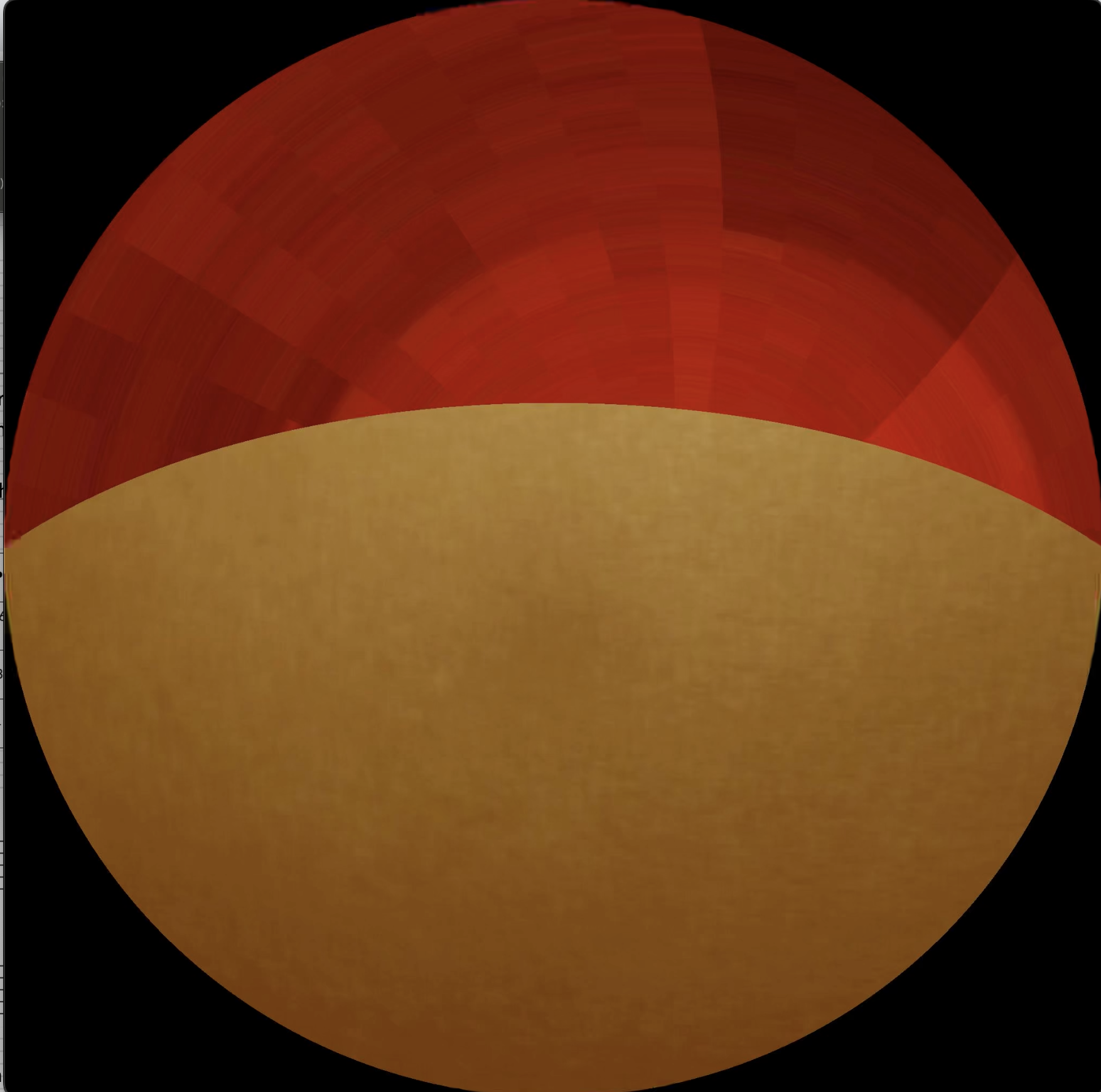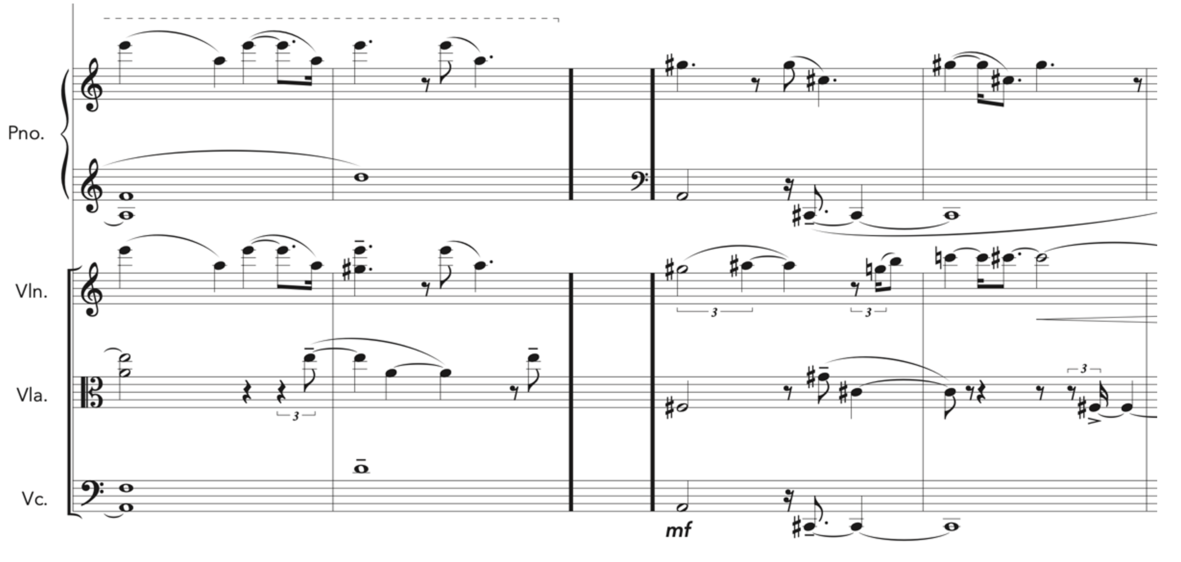This transformation showcases the system more directly than with the orbital period ratios, as the distance between planets can be easily associated with the distance between pitches (rather than with a concept such as the harmonic relation between orbits). I took the distance in km from each planet to the star[6] and used these numbers as frequencies, adapting them to the human audible register, resulting in the following pitches[7]:
In TRAPPIST-1 (for flautist and electronics), this transformation becomes the main harmonic material for the electronics part (representing the planetary system), exploring its microtonality and how the different pitches (each representing a planet of the system) interact between them (Example #3).
In The Flowering Desert, this transformation is used as the harmonic material for the moments that focus on the Mother Star. This character (sung by a chorus) represents the Star as the entity governing the planetary system. In this case, I adjusted the pitches to their nearest semitone to facilitate its performance[8] (Example #4).
With the distance between planets as a data source, we can also generate a 7-note musical scale (one note per planet) if we encapsulate the planetary system into an octave. Several transformations are possible, depending on the parameters you decide to play with. For example, a TRAPPIST-1 science dissemination article from the Spitzer Space Telescope assigns one note to each planet using a diatonic scale[9]. For both The Flowering Desert and TRAPPIST-1, I used the star as the first note of a chromatic scale (C) and planet H as the last note (B for an ascending scale, or C# for a descending scale). Within that frame, I calculated the other notes, which correspond approximately to the distance between planets.
In the case of The Flowering Desert, I approximated the result to the nearest semitone, creating the following scale and its inversion:
In TRAPPIST-1, due to its focus on microtonality, I approximated the results of the same transformation to cents:
In both works, the resultant scales and chords are not necessarily fixed[10] and can be transposed using any other pitch as the fundamental note. For example, in TRAPPIST-1, I transposed the scales presented in Figure 4 to have D+32 cents[11] as the note representing the star (Example #5). This transposition is used by the flautist during the piece to represent the scientist in relation to the planetary system (discussed further in 3.1.1.2 TRAPPIST-1). In The Flowering Desert, the harmonic material based on orbital ratios (Figure 1) appears transposed in different moments to structure the Mélodrame sections (Figure 6)[12].
Example #3
Use of the harmonic material generated with the distance from the planets to the star (Table 2) in the electronics part of TRAPPIST-1.






